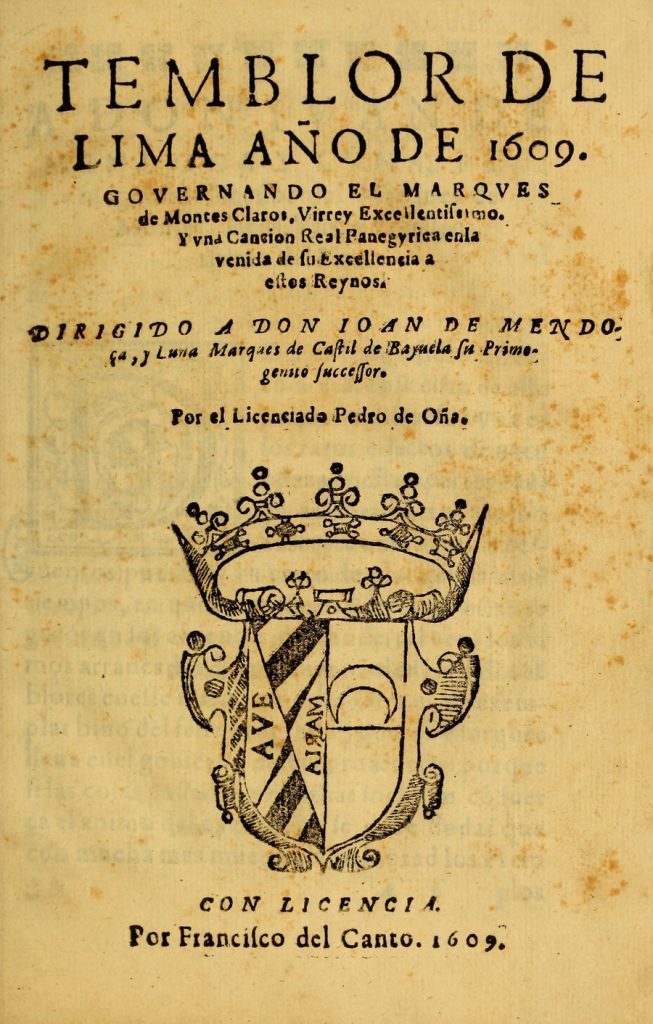
Libraries
Libraries
Temblor de Lima
Pedro de Oña, born in the territory of the Viceroyalty of Peru, in Chilean Angol, is one of the most relevant Creole writers to understand the political and cultural transition from the 16th to the 17th century. He is especially remembered for continuing the epic saga of the Araucanians started by Alonso de Ercilla with his tamed Arauco (Lima, 1596); however, his second work, Temblor de Lima reveals both his political and literary virtues.
Since the facsimile edition of Toribio Medina, Temblor de Lima has been described as a failed work that is reduced to mere flattery and the treatment of an unpoetic matter. In a recent study, Sarissa Carneiro rightly describes Oña’s text in its exact dimension: that of a work that positions both the figure of the viceroy in times of adversity and the Peruvian Creole elite.
Its dialogic structure, between the shepherds Arcelo and Daricio, recalls the Neronian bucolic tradition of Tito Calpurnio Siculus. In this Sicilian tradition it was common for shepherds to lecture on various natural disasters: volcanic eruptions, earthquakes, and comet transits. These were for the mentality of the time (which was inherited until the Lima of the seventeenth century) unmistakable signs of divine anger that heralded social political changes. Temblor de Lima is ascribed to the corpus of American epic poetry insofar as its ideal recipient is the highest authority, the viceroy. Its presence in the American letters warns, without a doubt, about the capacity that the peoples of the South of America have had since ancient times to overcome natural phenomena.
Elio Vélez Marquina
Proyecto Estudios Indianos

